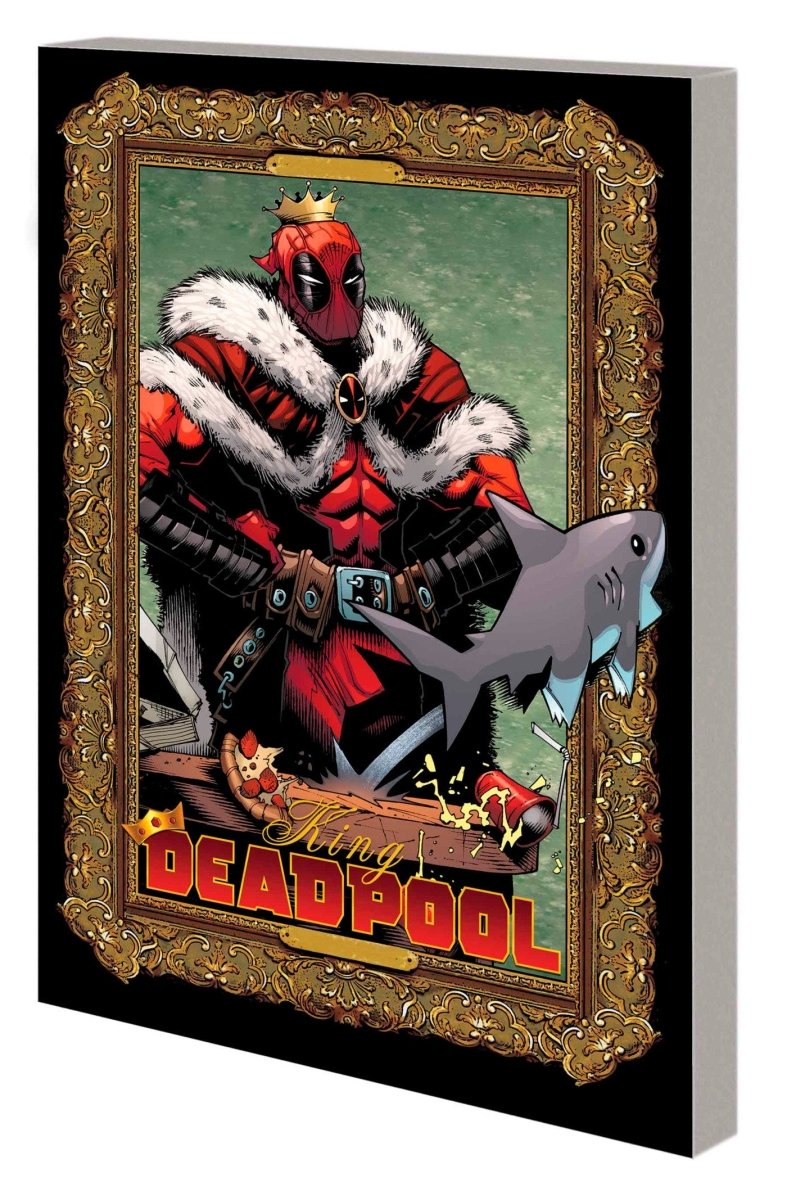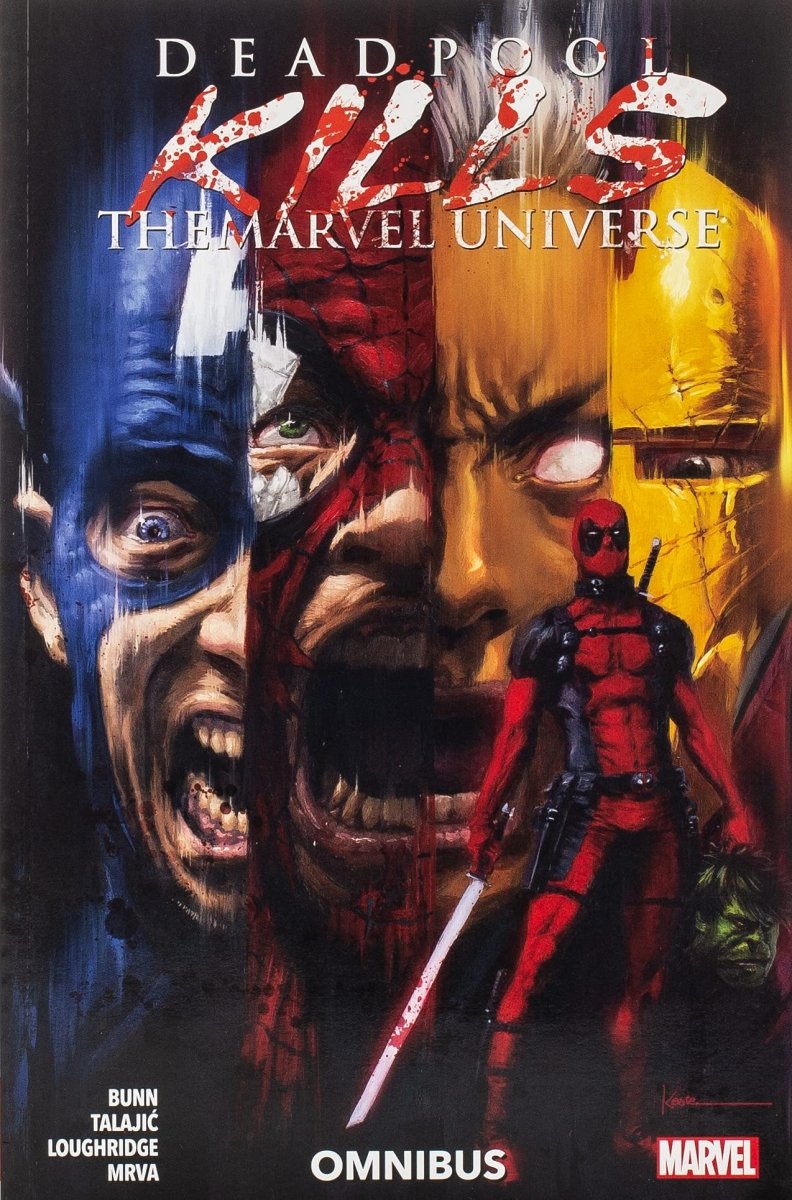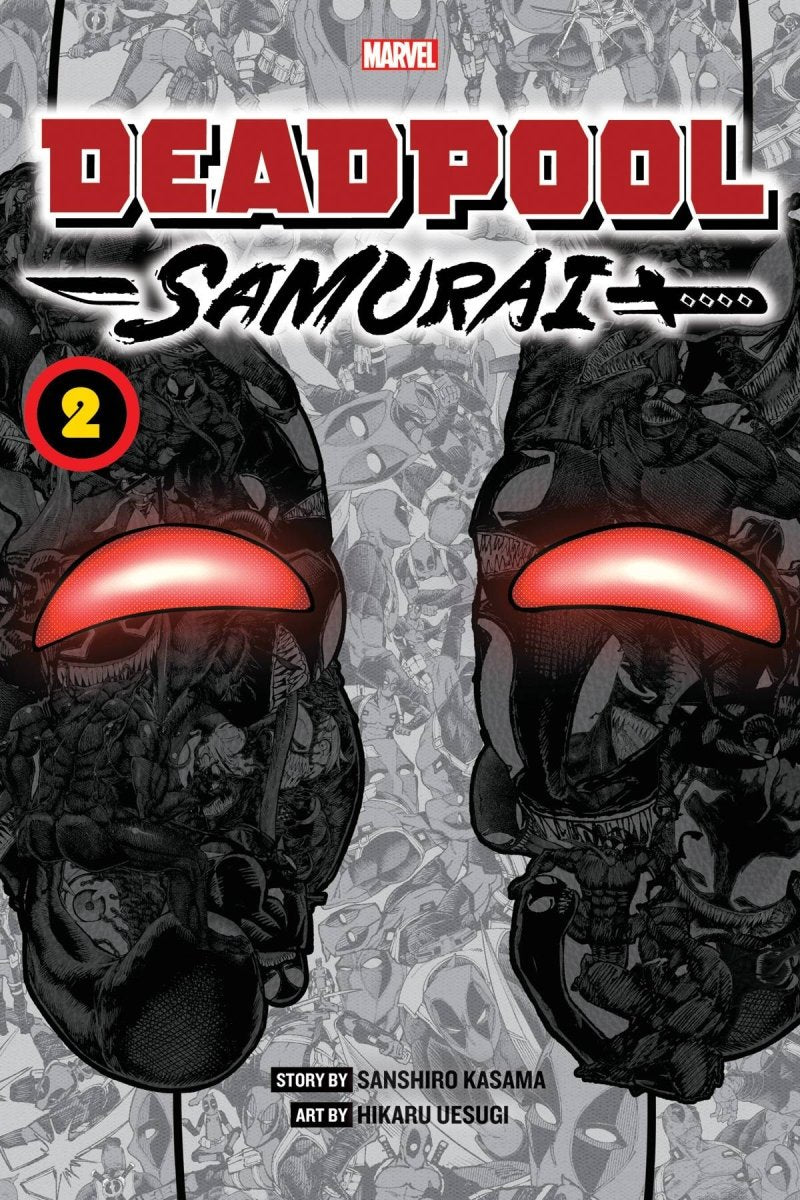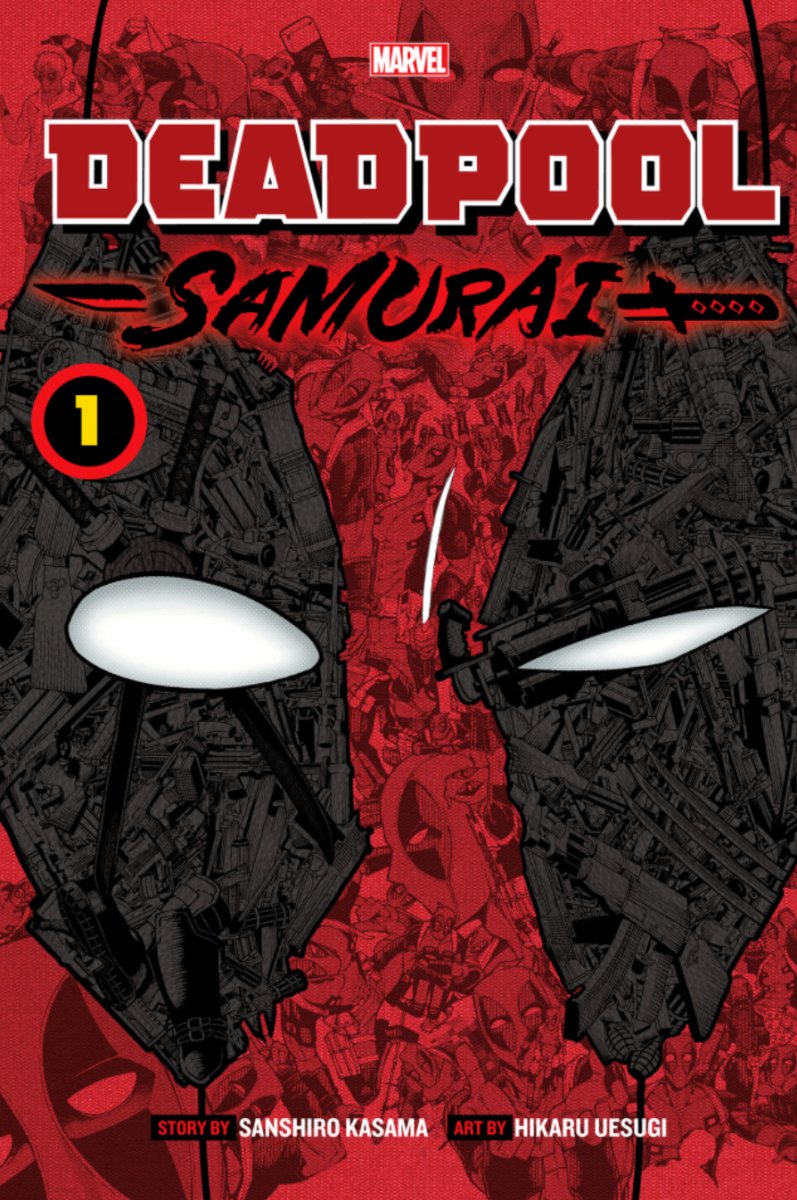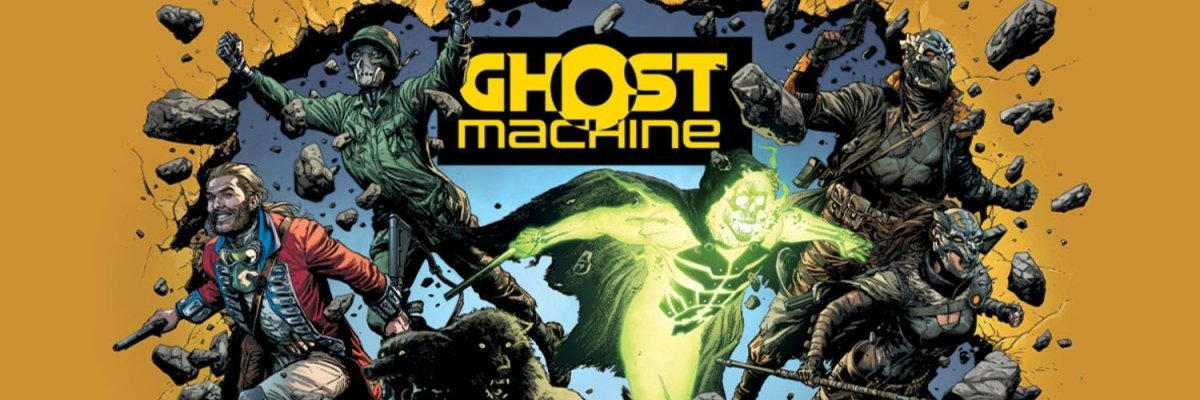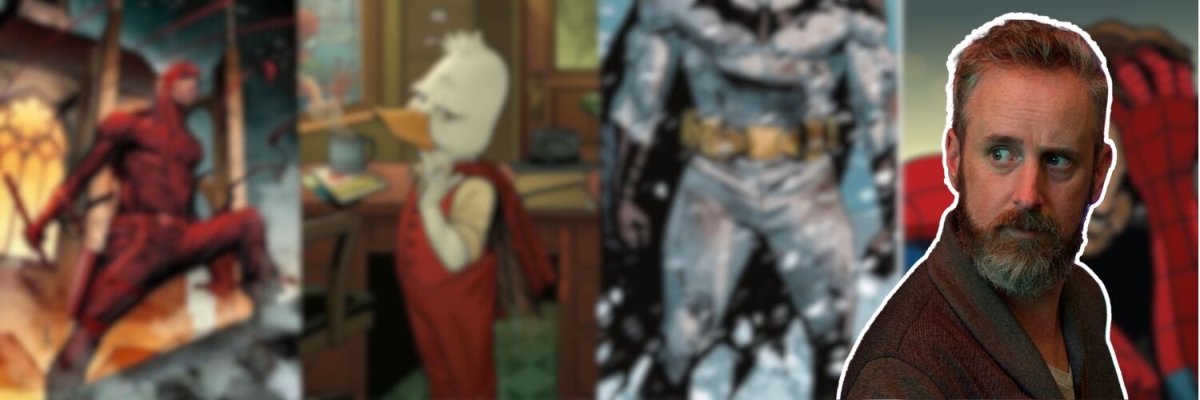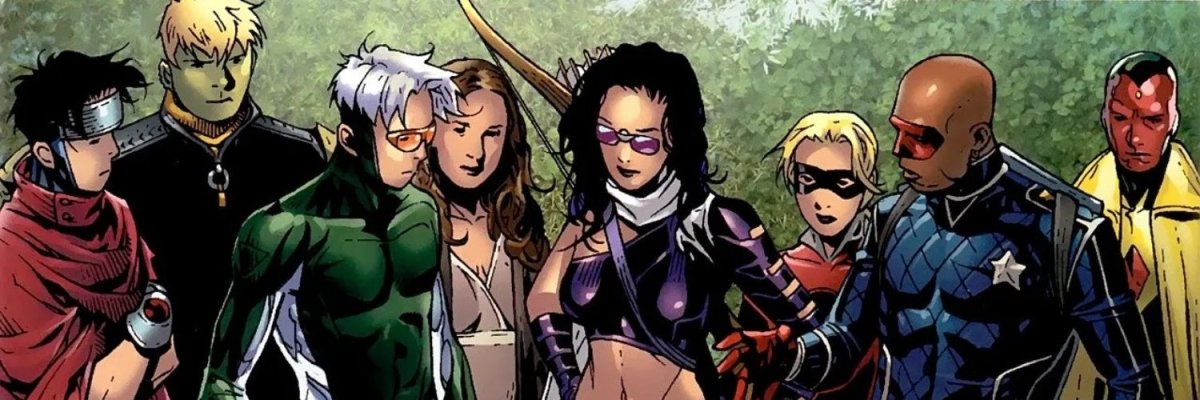Wade Wilson has been many things – a villain, a mercenary, a superstar and a father – but boring he certainly isn’t! In the thirty-something years since his first appearance, it is this flexibility that kept Deadpool on top of the game. He can be a goofy comedy relief side character or lead his own title. You can put him in a horror book or an action book, and it will still work.
And of course, there’s that “ability” to break the fourth wall. Marvel pulled this off with She-Hulk first years before, however, it is Deadpool that people will usually think about when it is mentioned. This is because of the irreverent way he approaches it.
While She-Hulk will argue with her writers and editors, criticizing tropes, and Gwenpool will use the very comic book medium as a simulacrum of her powers, Deadpool will often just make tongue-in-cheek jokes, making fun of the situations, characters and even Marvel. For Wade Wilson, breaking the fourth wall is his madness – and others will acknowledge it as such.
Marvel’s Versatile Assassin
What made Deadpool stand out though, is that you can insert him into any story to spice it up and make it more fun. He started his life under the pens of Rob Liefeld and Fabian Nicieza, as the villain of New Mutants #98.

Even his first appearance is an inside joke – Teen Titans had Slade Wilson, Deathstroke, and thus teen X-Men (or New Mutants) had to get Wade Wilson, Deadpool. From there, he would appear in X-Force (which continued the story of New Mutants) and then spin off into the greater Marvel universe, popping up in Avengers, Daredevil and more.
However, the thing that makes Deadpool really stand out is the secret need we all have – to belong. Wade Wilson is always an outcast – he’s the annoying person on your team that makes you wish you’d rather work alone. And Wade wants nothing else than to be a part of a group – yet his past, his insanity, his personality will always pull him in another direction, always tearing any connection he makes. And this makes him so interesting!
The Early X-Force
If there is one team that Deadpool is always attached to, then it’s the X-Force – a group of Mutants who would (usually) do whatever it takes. X-Force are the radical ones, the black ops teams, or the CIA of Krakoa. But to talk about the team, we need to go back to a more innocent time…
New Mutants were a group of new kids on the block trained by Professor X. In the 80s, Claremont created this sister book to his Uncanny X-Men to introduce a new group of mutants. But as the 90s were coming and comics are becoming more grittier – so did the new students. Suffering loss of teammates and family and going to Inferno, by New Mutants #98, the students were done being students. It was time to find a new purpose.
Cable arrived in New Mutants #87 and quickly changed the team – putting Xavier’s dream behind, Cable wanted them ready for war. Enter guns, pouches and Rob Liefeld (who took over the art duties in #86, with Louise Simonson still writing). After hitting #100, New Mutants ended and was replaced by X-Force #1 (written by Fabian Nicieza and Liefeld, with art by Liefeld), with the mission to fight back. And Deadpool, a villain just a few issues before, would appear throughout the title often.
This is why Deadpool’s first mini – The Circle Chase by Mark Waid and Fabian Nicieza – is collected in the pages of X-Force Epic Collection Vol. 3. Sadly, not all volumes are as easy to find – but the beginnings of X-Force and Deadpool’s (mis)adventures with them can also be found in the X-Force Omnibus and the newly announced reprint of Deadpool & X-Force (which I am very excited about!)
Deadpool by Joe Kelly
 If you read this early material, you might be surprised by how different Wade is from the one we know (and love) today. He didn’t even break the 4th wall! This is because Deadpool didn’t really see too much development until he fell into the capable hands of Joe Kelly, Christopher Priest and Gail Simone, and got his first long-term series.
If you read this early material, you might be surprised by how different Wade is from the one we know (and love) today. He didn’t even break the 4th wall! This is because Deadpool didn’t really see too much development until he fell into the capable hands of Joe Kelly, Christopher Priest and Gail Simone, and got his first long-term series.
Deadpool #1 hit the stands in 1997, with Joe Kelly writing and Ed McGuinness on art – and it is Kelly’s writing that will forever shape the character. Wade would receive his supporting cast – including Blind Al and Weasel – as well as become firmly established in the angst and slapstick comedy that is present to this day.
For the first arc, McGuinness art is very cartoony – which fits well with the character. The faces are expressive, the colors are bold, and the whole thing is a fun, action-packed 90s goodness!
The series would run for #69 issues (with Kelly writing 32 of them), and is collected across the early Epic Collections Volume 2: Mission Improbable, Volume 3: Drowning Man and Volume 4: Dead Reckoning.
Cable & Deadpool
 After a few years of general tranquility (when he was considered dead), Deadpool’s name would be on the cover of a comic once again in 2004, with Cable & Deadpool. If you have ever wanted a buddy-cop type of story in the medium, then this is the one for you.
After a few years of general tranquility (when he was considered dead), Deadpool’s name would be on the cover of a comic once again in 2004, with Cable & Deadpool. If you have ever wanted a buddy-cop type of story in the medium, then this is the one for you.
Fabian Nicieza came back to writing Deadpool, with Mark Brooks on the art (and Patrick Zircher taking over at issue #3). The clash of always-serious Cable with absolutely bonkers Deadpool is always fun, but when you add up some time-travel shenanigans, you know you are in for a treat.
Top it off with Zircher’s art, which offers a great balance of gritty realism and dynamic action. It is a great book of the early 21st century – mixing the classic comic storytelling with a more modern, kinetic approach. And while Deadpool & Cable Omnibus is out of print, Deadpool & Cable Modern Era Epic Collection started collecting the series in place of the old Ultimate Collection books, and is a great place to start!
Deadpool by Daniel Way
 The next writer to contribute to Deadpool’s quickly expanding mythos was Daniel Way, when he picked up the new ongoing around the time of the Secret Invasion event. Way would introduce (or cement) many of Deadpool’s staples that we know today.
The next writer to contribute to Deadpool’s quickly expanding mythos was Daniel Way, when he picked up the new ongoing around the time of the Secret Invasion event. Way would introduce (or cement) many of Deadpool’s staples that we know today.
He brought back Bob, Agent of Hydra from Cable & Deadpool and made him a recurring character in the run. This is also where Deadpool’s obsession (or infatuation?) with Spider-Man also first makes itself clear, while Deadpool’s descent into lunacy continues.
On a more controversial note – this is the run that made Deadpool into a “meme” character. During this run, Deadpool got his multiple personalities, inner narration, and the jokes became very over the top. This has been polarizing, with some people loving it and some… not enjoying it as much. One thing is certain – no one was left indifferent! You can grab the Deadpool by Daniel Way Omnibus and see on which side you fall yourself!
The Best X-Force There Is!
 After Way’s run, Deadpool was in a bit of a limbo. He had a couple of series like Deadpool Team-Up and Deadpool Corps (which are all collected in the Deadpool & Co. omni), as well as a stint in the MAX imprint and a run with Headpool – his zombie head from Marvel Zombies.
After Way’s run, Deadpool was in a bit of a limbo. He had a couple of series like Deadpool Team-Up and Deadpool Corps (which are all collected in the Deadpool & Co. omni), as well as a stint in the MAX imprint and a run with Headpool – his zombie head from Marvel Zombies.
It took Rick Remender (and main artist Jerome Opeña) to bring the spotlight back to the character at the pages of The Uncanny X-Force – and this is (according to many) one of the best representations of the character that we ever got.
Remender’s Uncanny X-Force sees the team become a black ops group outside of Mutant jurisdiction. It sees them sent on a mission to assassinate Apocalypse, expanding the character of Fantomex as well as dealing with Archangel persona coming back.
Remender writes Deadpool with disregard and very insane, while Opeña’s art is full of delicious and visceral action. The story also poses some very interesting moral questions and was collected in the recently reprinted Uncanny X-Force by Rick Remender Omnibus.
Deadpool by Posehn and Duggan
 In 2012, Brian Posehn and Gerry Duggan took over the writing duties and the title of Deadpool, and if you ask me – this run was a gamechanger (although the opinions are – once again – polarizing).
In 2012, Brian Posehn and Gerry Duggan took over the writing duties and the title of Deadpool, and if you ask me – this run was a gamechanger (although the opinions are – once again – polarizing).
This run introduced Deadpool’s lost daughter Ellie, humanizing the character like he’s never been before. The team also created Shiklah, who will end up marrying Wade and then become his villain too. The team worked hard on establishing his place in the bigger Marvel universe, and it was oh so effective.
This run will be collected starting from Deadpool Modern Era Epic Collection Volume 5: In Wade We Trust.
In 2016, Duggan will pick up the title alone with Mike Hawthorne primarily on art. Riding on the success of the movie (and an in-comic rise in popularity too), Deadpool became rich after Secret Wars and merchandized his name, creating his own Mercs for Money impersonators.
Duggan kept exploring who Wade Wilson is and what he fights for, his need to belong and to build a family of his own, as well as further pushing his relationships with the cast. He took him through a dark turn in Despicable Deadpool, to finally bring the story to a conclusion that left me in shambles.
Hawthorne’s art meanwhile remained consistent throughout. He has a great penchant for both action scenes and humorous moments, and I especially loved how animated he makes all the characters.
Post-Duggan Deadpool
Following Deadpool #300 would always be a tough act. Love it or hate it, Duggan has made his mark in the character and shook the status quo for the writers to follow.
 Skottie Young (with artists Nic Klein and Scott Hepburn) followed with a short stint full of silly humor and violence, including fights with both Mephisto, Weasel and Santa Claus. Deadpool by Kelly Thompson (with art by Gerardo Sandoval and Chris Bachalo) followed, introducing Deadpool as a king of Staten Island, a doomed romance with Elsa Bloodstone and bringing Jeff the Land Shark into contact with Wade.
Skottie Young (with artists Nic Klein and Scott Hepburn) followed with a short stint full of silly humor and violence, including fights with both Mephisto, Weasel and Santa Claus. Deadpool by Kelly Thompson (with art by Gerardo Sandoval and Chris Bachalo) followed, introducing Deadpool as a king of Staten Island, a doomed romance with Elsa Bloodstone and bringing Jeff the Land Shark into contact with Wade.
Deadpool by Alyssa Wong (art by Martin Coccolo and Luigi Zagaria) (Volume 1 and Volume 2) came next, giving Wade Princess – a Carnage dog-wolf-thing clone and Wade’s “daughter” – and Valentine Vuong, a new assassin love interest. Finally, if you want to catch up on the current run, then look on further than Deadpool by Cody Ziglar: Blood Bond, with new villains and return of some very familiar faces!
Spider-Man/Deadpool
 Apart from the main title and some team up books, Deadpool has appeared in a slew of other books big and small! The standout for me, however, will always and forever be his iconic team up with Spider-Man, as seen in the pages of Spider-Man/Deadpool.
Apart from the main title and some team up books, Deadpool has appeared in a slew of other books big and small! The standout for me, however, will always and forever be his iconic team up with Spider-Man, as seen in the pages of Spider-Man/Deadpool.
The series saw the return of Joe Kelly and Ed McGuinness working on the dynamic duo, with various teams jumping in from time to time to tell stories separated from the main narrative. They stayed until issue #18, all of which are collected in Spider-Man/Deadpool Modern Era Epic Collection Volume 1: Isn’t It Bromantic.
From issue #19, various teams would work on the title, which is collected up to issue #32 in Spider-Man/Deadpool Modern Era Epic Collection Volume 2: ‘til Death Do Us… I found the whole series endlessly entertaining. Deadpool’s need to become a better person is clear, especially when juxtaposed with Spidey who he idolizes. Peter Parker, on the other hand, needs to learn patience when faced with the only person who might talk more than he does. It’s a team up we have all been dreaming of!
And a Whole Slew of Solo Stories!
As I mentioned way back at the start of this article, Deadpool is a very flexible character. The best showcase for this is the collection of widely different limited series he was a part of.
 The most famous one, of course, has to be Deadpool Kills the Marvel Universe. This horror tale shows what happens when Deadpool methodically goes through each and every one of Marvel’s heroes. There is no mercy for anyone, from Captain America and Spider-Man to poor Power Pack! Cullen Bunn writes dread like no other, and Dalibor Talajic’s art is graphic and disturbing. And I swear, the end of that book still keeps me up at night!
The most famous one, of course, has to be Deadpool Kills the Marvel Universe. This horror tale shows what happens when Deadpool methodically goes through each and every one of Marvel’s heroes. There is no mercy for anyone, from Captain America and Spider-Man to poor Power Pack! Cullen Bunn writes dread like no other, and Dalibor Talajic’s art is graphic and disturbing. And I swear, the end of that book still keeps me up at night!
This was followed by Deadpool: Killustrated (with Matteo Lolli on art this time around), in which Deadpool decides to get rid of all literary characters, including Don Quixote, Moby Dick, Sherlock Holmes and many others. The “Killology” was topped off with appropriately named Deadpool Kills Deadpool in which he sets sights on himself (Salva Espin tackled art).
Deadpool & Wolverine: WWIII meanwhile reunites Deadpool and Logan with Joe Kelly (and Adam Kubert and Frank Martin on art) – do I even need to say anything about this book? You already know that when Kelly is involved in Deadpool, the only thing we can get is goodness. Kubert’s art also pairs spectacularly with Martin’s colors, every single page is brimming with action for a non-stop thrill.
And speaking of creators returning to the character, Rob Liefeld came back to draw Wade at the pages of Deadpool: Bad Blood. Chris Sims and Chad Bowers wrote the story which introduces Thumper, a new villain with mysterious connections to Wade’s past. And instead of reading this article – you should read the book! Or better yet, grab the collected Deadpool: Bad/Badder Blood that just hit the shop this month!
There is a lot more to read from the Merc with a Mouth – but I will let you find your favorite story. Let me know if I missed any good ones – I am always craving for more Deadpool!



